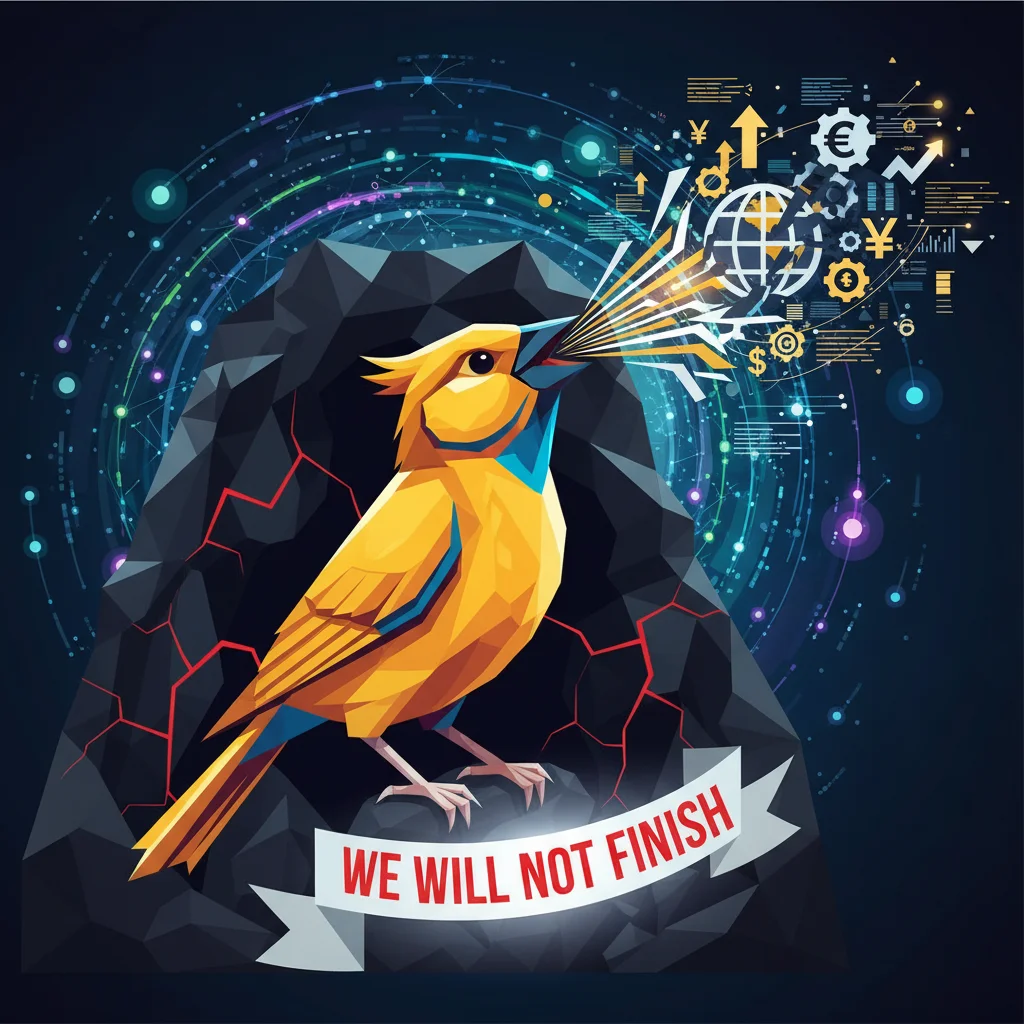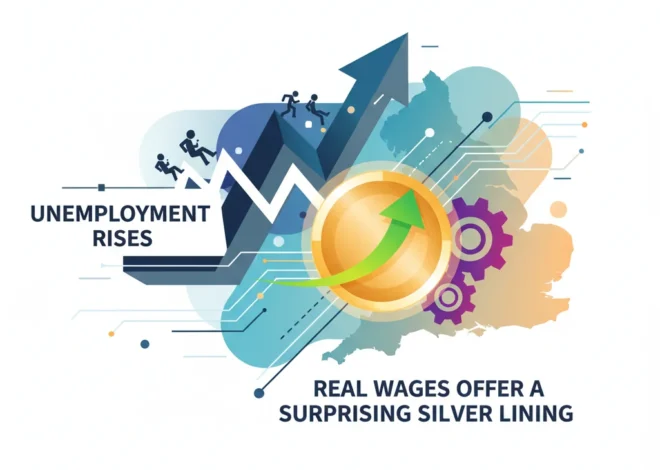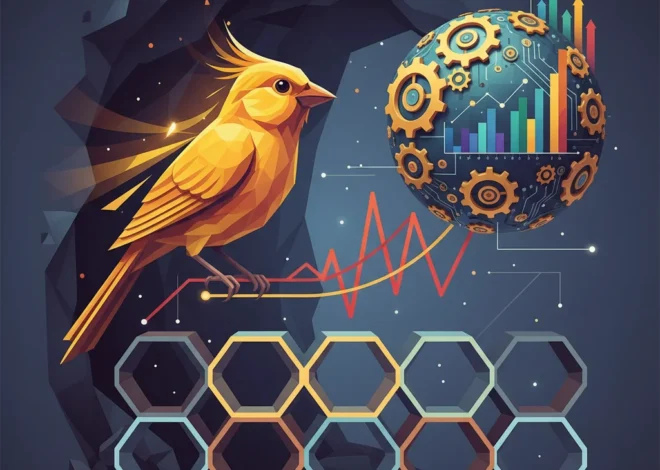
The Canary in the Coal Mine: What One Food Bank’s Defiance Signals to the Global Economy
In a small news item that many might overlook, a local food bank, faced with an order to cease operations, issued a simple, powerful declaration: “we will not finish.” This statement of defiance, reported by the BBC, is more than just a heartwarming story of community resilience. For astute investors, finance professionals, and business leaders, it is a critical, ground-level signal—a canary in the coal mine of the global economy. While Wall Street fixates on CPI data and Federal Reserve minutes, the true health of our economic systems is often revealed in the struggles and triumphs of organizations like these. The pressure on a local food bank is a direct, unfiltered indicator of household financial distress, a metric that often precedes more conventional economic reports.
This single event forces us to ask a more profound question: In an age of unprecedented financial innovation, from sophisticated algorithmic trading to the rise of decentralized finance, why do these fundamental safety nets remain so fragile? The answer lies at the intersection of community, economics, and technology. The resilience of this charity is not just a testament to human spirit; it’s a challenge to the world of finance to look beyond the balance sheets and recognize the immense, untapped value of social capital and community stability as a cornerstone of a sustainable economy.
The Food Bank as a High-Frequency Economic Indicator
Traditional economic analysis relies on lagging indicators. GDP figures, unemployment rates, and inflation reports give us a picture of what has already happened. By the time this data is compiled and released, market conditions may have already shifted. Business leaders and investors are in a constant search for leading indicators—data points that provide a glimpse into the future. While not traditionally viewed through this lens, the operational status of social support systems like food banks offers precisely this kind of forward-looking insight.
An increase in demand at food banks is a direct reflection of eroding purchasing power and financial instability at the household level. According to a 2023 report from Feeding America, their network of food banks distributed approximately 5.3 billion meals to people facing hunger in the United States (source). This isn’t just a social issue; it’s a stark economic one. It signals that wages are not keeping pace with the cost of living, that savings are depleted, and that the mainstream banking system is failing to serve the most vulnerable. For a business leader, this translates to reduced consumer discretionary spending. For a stock market analyst, it signals potential headwinds for retail and consumer goods sectors. For a policymaker, it’s a clear sign that fiscal and monetary policies are not reaching every corner of the economy.
The resilience shown by the food bank in the face of a shutdown order is, therefore, a qualitative metric of a community’s “social balance sheet.” It represents a form of non-financial capital—trust, volunteerism, and mutual support—that allows a community to function even when formal economic structures are under stress. Ignoring these signals is akin to ignoring a company’s off-balance-sheet liabilities; it provides an incomplete and dangerously optimistic picture of systemic health.
High-Stakes Handshake: Decoding the Trump-Xi Summit and Its Impact on the Global Economy
Modernizing Community Support: A Fintech and Blockchain Imperative
The fragility of the traditional non-profit funding model is a critical vulnerability. These organizations often rely on sporadic donations, time-consuming grant applications, and a volunteer base that is itself subject to economic pressures. This is where the world of fintech and innovative financial structuring can offer transformative solutions, moving these essential services from a position of precarity to one of sustainability.
We can reimagine the financial architecture of community support systems by applying the same principles that drive innovation in capital markets. This involves diversifying revenue streams, improving operational efficiency, and enhancing transparency to attract a new generation of socially-conscious investors.
Below is a comparison of the traditional model versus a
financial technology-enabled approach:
| Feature | Traditional Non-Profit Model | Fintech-Enabled Model |
|---|---|---|
| Fundraising | Episodic (galas, mailers, grant cycles) | Continuous (micro-donations, “round-up” features, subscription models) |
| Transparency | Opaque; annual reports with lagging data | Radical; Blockchain-based ledgers for real-time donation tracking |
| Governance | Centralized board of directors | Decentralized (DAOs), allowing community stakeholders a vote |
| Capital Access | Limited to donations and grants | Access to social impact bonds, peer-to-peer lending, tokenized assets |
| Operations | Manual-heavy (cash handling, paper records) | Automated via digital banking, smart contracts, and resource management software |
The integration of blockchain technology is particularly promising. A transparent, immutable ledger could allow a donor to track their contribution from the point of donation to the exact meal it provides, fostering unprecedented trust and engagement. Smart contracts could automate grant distribution based on the achievement of predefined milestones, reducing administrative overhead. This isn’t a futuristic fantasy; the technological building blocks exist today. The challenge is in bridging the gap between the worlds of high finance and grassroots social service.
The Trillion-Dollar AI Paradox: Why Massive Investment Isn't Guaranteeing Success
From Philanthropy to Impact Investing: The New Capital Allocation
For the modern investor, the story of this food bank should prompt a shift in perspective—from pure philanthropy to strategic impact investing. Philanthropy addresses the symptoms of economic distress, while impact investing aims to fund scalable solutions that tackle the root causes. An investor concerned about the rising demand for food banks isn’t just donating to one; they are allocating capital to ventures that enhance food security, promote financial literacy, and create stable employment.
This represents a significant evolution in the understanding of risk and return. The risk associated with widespread food insecurity is not isolated; it is a systemic risk that impacts political stability, workforce productivity, and long-term economic growth. Therefore, investing in solutions is not merely an act of social good but a sophisticated form of long-term risk mitigation for a diversified portfolio. According to the Global Impact Investing Network (GIIN), the market for impact investing is estimated to be $1.164 trillion, a clear signal that capital is actively seeking both financial and social returns.
Opportunities for this type of investment are abundant and align with major growth sectors:
- Agri-Tech: Investing in startups that improve crop yields, reduce food waste through better supply chain logistics, or develop urban farming solutions.
- Fintech for Good: Supporting companies that provide low-cost banking services to the unbanked, offer tools for financial literacy, or create platforms for interest-free emergency loans.
- Affordable Housing: Funding real estate investment trusts (REITs) or development projects focused on creating stable, affordable housing, which is a primary determinant of a family’s ability to afford food and other necessities.
This approach transforms the problem from a drain on resources into a catalyst for innovation and economic opportunity. It aligns the powerful engine of the capital markets with the fundamental need for community resilience.
The Riyadh Reroute: Why Global Finance Talent is Chasing Trillions in Saudi Arabia
Conclusion: The Resilient Economy is a Local Economy
The defiant promise of a single food bank to “not finish” is a microcosm of the resilience we must build into our entire economic framework. It serves as a powerful narrative that should resonate in boardrooms, on trading floors, and in the halls of government. It tells us that the most sophisticated financial models are meaningless if they are detached from the reality of household economic health.
The path forward requires a synthesis of perspectives. We must learn to read the “soft data” from our communities with the same diligence we apply to market data. We must deploy our most advanced tools—from fintech and blockchain to innovative investment vehicles—not just to optimize financial returns, but to build robust, decentralized, and resilient local economies. The ultimate test of a successful economy is not the height of its stock market indices, but the strength of its foundations. And as this one small charity has shown us, those foundations are built on the unwavering commitment to meet fundamental human needs, a commitment that the world of finance would be wise to invest in.


